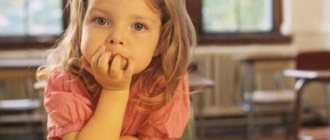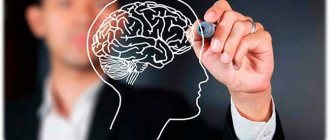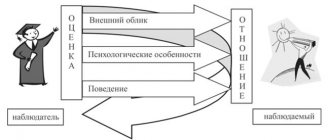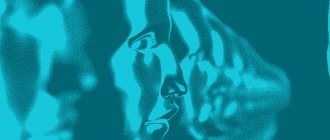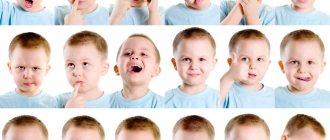Coordination of movements in sports is the degree of harmony between an athlete’s muscles at two different levels: intermuscular and intramuscular. The intermuscular level of coordination is manifested in the interaction between the athlete’s various muscle groups - antagonists, synergists and agonists. In addition, at a microscopic level, the interaction of motor components within the muscle occurs, this is called intramuscular coordination.
The more harmoniously an athlete’s muscles work at these two levels, the better he controls his body, and as a result, he achieves more impressive results during training.
Intermuscular coordination training
In order for intermuscular coordination of movements to develop, it is first necessary to reduce the activity of antagonist muscles in order to release agonist muscles, due to signals sent by the nervous system. The second important aspect is that coordination training takes into account the specific characteristics of the sport in which the person is engaged.
Here are the main recommendations for training given by experts, based on research results regarding the coordination of athlete’s movements:
- strive for variety within your workouts: practice in different locations, constantly change the set of exercises, use new equipment, change the nature of the movement and the number of repetitions. Your body does not have to get used to a certain set of exercises or environmental conditions - then the nervous system will begin to work at full capacity, sending signals to the muscles faster and more clearly. The best thing you can do to develop your motor coordination
- do not give the body the opportunity to adapt to stress.
- combine different types of physical activity: running, then strength training, then cycling. You can use any other order of involving your favorite sports in your training, as long as they are varied. This will help establish contact between different muscle groups, causing them to act more harmoniously.
- Perform all exercises at the peak of your capabilities so that the body is in a state of physical tension, without the ability to relax. Studies have shown that athletes who train under physical as well as psychological stress show the best results in terms of increasing the level of intermuscular coordination. However, it is worth understanding that the training process must proceed within the physiological norm, without the risk of injury.
Coordination of movements and its types
For various types of activity of a child and an adult (play, study, work, self-care, etc.) simple sensorimotor reactions are a rare phenomenon; complex sensorimotor reactions are more typical, among which the so-called reactions to a moving object
(RDO), when movement must be performed at a certain moment in accordance with an object (object) moving in space.
The greatest difficulty in the psychomotor process during various types of motor activity is sensorimotor
in which “not only the perceived stimulus is dynamic, as in a reaction to a moving object, but also the implementation of the motor action itself” (K.K. Platonov, 1977; P.65) . In other words, with sensorimotor coordination there must be a continuum of both perception and movement, and “the movement is regulated by the perception of its results, the result of the movement is continuously checked against the task” (ibid.).
Various types of objective activities require a person to have fairly coordinated movements with both hands or arms and legs and other parts of the body.
In these cases, to sensorimotor coordination is added such a psychomotor property as coordination of movements,
which is known to be an indicator of human dexterity.
The concept of “coordination” is widely used today in various fields of scientific knowledge and in relation to various areas of practical activity. The Dictionary of Foreign Words interprets this term as follows: “Coordination” [lat. with (n) - with, together + ordinatio arrangement in order] - coordination, combination, putting in order, into conformity (concepts, actions, components of something, etc.). For use in biological sciences, the term “coordination” was proposed in 1914 by the famous Russian biologist A.N. Severtsov.
It is customary to distinguish between several types of coordination of movements: static, dynamic, reciprocal, etc.
The reference literature does not provide a specific interpretation of the concepts behind these terms.
Under static coordination, writes M.O. Gurevich, “you need to understand the regulation of motor acts that keep the body and its individual segments in a state of balance (for example, when standing on one leg)”
and under dynamic coordination,
he continues, “the regulation of movements in the sense of their accuracy” (M.O. Gurevich, 1930; P.65).
The basis of reciprocal coordination ( “reciprocal [lat. reciprocus] -
mutual") lies "reciprocal (conjugate, cross) innervation - a reflex mechanism that provides innervation of interconnected groups of skeletal muscles involved in complex coordinated movements (walking, running, etc.), in which the contraction of one muscle group is accompanied by relaxation of other muscles (antagonists )" (Dictionary of Foreign Words, 1990; P.444).
ON THE. Bernstein (1966) defines coordination of movements as “overcoming excessive degrees of freedom of a moving organ” i.e. turning it into a managed system. In other words, by coordination of movements he understands expedient coordinated movements of various muscles, carried out as a result of reverse afferentation of the regulatory activity of the cerebral cortex.
Coordination of movements in the ontogenesis of a preschooler develops gradually based on the maturation of the corresponding brain formations and thanks to the experience the child acquires in various motor activities, especially in physical education classes, during outdoor games, in the process of various object manipulations, etc.
A quick and accurate motor reaction to a starting signal and good coordination of economical, precise and proportionate movements that implement motor acts in various types of activities determine, according to K.K. Platonov (1977), agility as a human motor quality, as a personality trait. Dexterity or clumsiness can manifest itself in various types of activity as one of the indicators of the characteristics of psychomotor skills, both during its normal development and in cases of deviations or insufficient formation.
Psychomotor and ideomotor processes (ideomotor)
As noted above, the range of psychomotor phenomena also includes ideomotor processes (ideomotor),
“connecting the idea of movement with the execution of movement” (K.K. Platonov, 1977; P.66).
According to the dictionary “Psychology” under the general editorship of A.V. Petrovsky. M.G. Yaroshevsky (1990; P.131) with clarified terms and their translation from the Dictionary of Foreign Words (1990; P.23; P. 187; P332) the term “ideomotor act”
[< Greek. idea - concept, representation, idea, image + < lat. motor - driving and jiai. aktus - act, action] is defined as “the transition of the idea of muscle movement into the actual execution of this movement (in other words, the appearance of nerve impulses that provide movement as soon as the thought of it arises).” Let us note here in passing that the very principle of the ideomotor act, as is known, was discovered back in the 18th century by the English physician D. Hartley and subsequently developed by the English psychologist W. Carpenter.
Currently, there are two points of view on the physiological mechanism of ideomotor acts. The first of them is based on the ideas of I.P. Pavlov, according to which the ideomotor act is controlled by efferent impulses coming from certain cells of the cerebral cortex. “It has long been noticed and scientifically proven,” he notes, “that once you think about a certain movement (that is, you have a kinesthetic representation), you involuntarily, without noticing it, produce it” (I.P. Pavlov, 1951; P.316 ). The second point of view comes from the position of N.A. Bernstein (1966) about the circular regulation of movements, according to which the ideomotor act is controlled thanks to feedback signals coming from the organs of movement.
It should also be emphasized here that the problem of ideomotor as a problem of the image and its role in the regulation of motor acts is one of the central problems of the psychology of movements, the psychology of physicality. From the perspective of pedagogical science, this problem touches on the issues of effective teaching of correct movements, the successful acquisition of motor skills by a child, as well as issues of preventing the causes of many erroneous, incorrect movements when children are initially familiarized with them, and in cases of underdevelopment or psychomotor disorders, its effective correction.
Morphofunctional organization
Psychomotor skills in normal
And pathological conditions
Psychomotor as a set of consciously controlled human motor actions, which is realized, as was shown in the previous chapter, in a wide variety of motor manifestations, is an extremely complex psychophysiological functional system that has a multi-level hierarchical organization with programming, control, regulatory and executive bodies.
Many organs and systems of the human body, and above all the nervous system
at various levels of its organization and
a system
of numerous
muscles,
the close interaction of which ensures both the retention of certain positions, postures of the body and its various parts (statics), and the performance of movements and motor actions of various natures (dynamics).
All the diverse wealth of subtle movements performed by a person in various types of professional or any other activity becomes possible thanks to the subtle differentiated work (contraction and stretching) of many muscles and muscle groups representing the executive organs of the motor system, the totality of which forms the muscular, or muscular, system of a person .
The work of a huge number of muscles (and in humans there are about six hundred skeletal muscles alone) is controlled by the central nervous system (the brain and spinal cord) with the participation of the peripheral nervous system (cranial nerves, spinal nerves and nerve plexuses). Peripheral nerves deliver impulses (orders to perform psychomotor actions) from the central nervous system along the efferent (outflow, motor) path to the working organ - the muscle, and information from the periphery - from the muscle (receptor located in it) along the afferent (outflow, sensitive) path back to the central nervous system. It has been proven that peripheral nerves are mixed in composition, that is, they contain both sensory and motor fibers.
The development of a child’s motor skills in the early stages of ontogenesis is due to the natural maturation of the corresponding brain structures, and subsequently depends on socio-pedagogical conditions, that is, training.
Thus, the success or failure of psychomotor development as a whole is determined by two main factors:
firstly, the maturity and functional readiness of the brain
and above all those of its departments that provide the possibility of this development and,
secondly, learning
that is, the formation of motor skills (M.M. Koltsova, 1973).
A large amount of data from clinical observations and experimental studies indicates that manifestations of motor disorders and motor immaturity, characterized by a variety of symptoms, different pathophysiological mechanisms, a specific effect on the state of individual mental functions of a person, etc., are caused by different localization of damage to brain structures or their functional insufficiency .
In connection with the above, knowledge of the morphological and functional characteristics of the nerve formations involved directly or indirectly in the implementation of psychomotor activity is important both for studying the motor sphere in normal conditions and with deviations, and for organizing the necessary work on the development of psychomotor skills and the correction of its deficiencies.
Our consideration of the morphofunctional characteristics of brain structures involved in the implementation of human psychomotor acts is based on a generally accepted clinical principle: the study of pathology through knowledge of the norm. This approach, in our opinion, firstly, is a necessary starting point in the formation of general ideas about the complex structure of the brain apparatus that provides human motor capabilities, and about the role of each of its components and other brain formations in the holistic work of the motor functional system, which and presents psychomotor skills as the subject of our consideration; secondly, it is an important part in preparing the necessary tools for conducting this type of research, the subject of which is at the intersection of a number of scientific disciplines; thirdly, it expands the possibilities for an objective assessment of the nature of deviations in motor development and conducting topical diagnostics of brain lesions in the process of a comprehensive medical, psychological and pedagogical study of human psychomotor functions; finally, fourthly, it provides a scientifically based organization of work on the development of psychomotor skills and the correction of its disorders.
We approach the consideration of the cerebral organization of psychomotor activity from the standpoint of the historical development of ideas about the nature of voluntary human movements. Based on this, in the first section of this chapter, based on an analysis of the literature, we outline the main key points in the process of forming ideas about the brain organization of human motor functions. In subsequent sections we also proceed from this principle, including historical material in their content, if necessary.
Previous2Next
WHAT HAPPENS WHEN WE FIGHT Without understanding the differences that exist between men and women, it is very easy to lead to a quarrel...
What does the IS operation and maintenance department do? Responsible for the safety of data (copying schedules, copying, etc.)…
Live by the rule: IS THERE NOT MUCH THING IN THE WORLD EXISTING? It is no coincidence that I emphasize that the space in your head is limited, but there is a lot of information around, and that your right...
What to do if there is no reciprocity? And now let's come down from heaven to earth. Have you landed? Let's continue the conversation...
Didn't find what you were looking for? Use Google search on the site:
Intramuscular coordination training
If intermuscular coordination can be called the development of movement technique, then intramuscular coordination is correlated with the broader concept of the general physical training of an athlete. Therefore, the goal of training aimed at developing this type of coordination is the development of power potential to its maximum. Often, an intramuscular coordination training program is designed in such a way that an increase in strength occurs without gaining muscle mass. Mainly, the athlete is tasked with performing exercises at high speed in a short time, which stimulates the neuromuscular system. Thanks to this, the fastest activation of the maximum number of motor units occurs, that is, movements are performed with maximum frequency. The following will help achieve a similar effect:
- eccentric strength exercises, from which the muscle begins to lengthen under the influence of load, subject to submaximal tension. Jumping, performing exercises with both arms or legs at once in the contraction phase, or with one of the arms/legs in the muscle stretching phase are good options. They should be performed at a fast pace, with an intensity of 120 to 150%, in 3-5 approaches with 2-5 repetitions and a three-minute pause.
- concentric strength exercises are used to improve coordination of movements
, in which the muscle contracts, maintaining maximum tension. You can use in training: acyclic variations of jumps, exercises in interaction with a companion who takes part of the load on himself during the eccentric phase of movement. Exercises are performed with 100% intensity, at maximum pace, with 5 sets of 1-2 repetitions and a pause of 3 minutes.
- development of reactive strength, using cyclic and acyclic jumps, at an explosive pace, with an intensity of 120 to 150%, in 2-3 or 3-5 approaches, with 6-10 repetitions and a break of three minutes.
Of course, the optimal option for developing coordination would be to engage in a sport that activates two types of coordination at once: intramuscular and intermuscular, for example, CrossFit. The main thing is not to let your muscles adapt; this can be easily achieved by coming up with new variations of well-known exercises.
Don't miss interesting news and events in the telegram channel: https://tlgg.ru/fitbarnews
